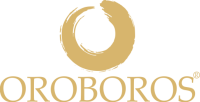Our stylist and Founder
Orit Rahamim
Orit Rahamim is the soul and creator of Oroboros. Born in Haifa (ISR) in 1969 she obtained a degree in Fashion and Accessories in Milan at the European Institute of Design in 1994. After many experiences in Miami and Tel Aviv and not least a brilliant degree in full-time mom of three wonderful children, Michelangelo, Raphael and Isabel, she decided to get back in the game of her never-ending love of creation and fashion. Today she lives and manages Oroboros in the magnificent and eternal city of Rome.
Always attentive to the ecological and environmental aspect, Orit has decided to create the Oroboros brand to catalyze all her experiences, passions and idea in the world of fashion, managing to give it a green and eco-sustainable component. Moreover, her continuous search for cultural meanings, spirituality and peace has turned into a synthesis of the concept of Aggregore. Her intent is to bring the exotic tradition and culture into the present, challenging the status symbol with the status of interiority.
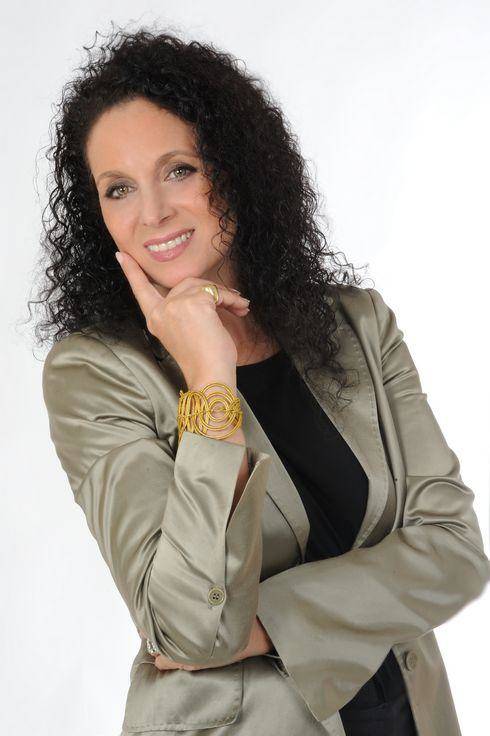
Our stylist and Founder
Orit Rahamim
Orit Rahamim is the soul and creator of Oroboros. Born in Haifa (ISR) in 1969 she obtained a degree in Fashion and Accessories in Milan at the European Institute of Design in 1994. After many experiences in Miami and Tel Aviv and not least a brilliant degree in full-time mom of three wonderful children, Michelangelo, Raphael and Isabel, she decided to get back in the game of her never-ending love of creation and fashion. Today she lives and manages Oroboros in the magnificent and eternal city of Rome.

Always attentive to the ecological and environmental aspect, Orit has decided to create the Oroboros brand to catalyze all her experiences, passions and idea in the world of fashion, managing to give it a green and eco-sustainable component. Moreover, her continuous search for cultural meanings, spirituality and peace has turned into a synthesis of the concept of Aggregore. Her intent is to bring the exotic tradition and culture into the present, challenging the status symbol with the status of interiority.
Mission and vision

Oroboros has a meaning that derives from ouroboros, an ancient symbol present in many indigenous cultures. It represents a snake biting its tail, forming a circle without beginning or end and thus alluding to the cyclical nature of time.
Apparently immobile but in eternal movement, it represents spiritual power and the universal energy that is constantly consumed and renewed; the cyclical nature of things that start again from the beginning after having reached its end. It therefore symbolizes unity, the totality of the whole, the infinite, eternity, cyclical time, the eternal return.
Our product has in its mission the external and internal, objective and subjective research of products and manufacturing that derive directly from humans; from its ethnicity and tradition, as well as from the manual production, which is not a simple repetitive action but a transmission of the inside world to the product.
We aim to compose an alchemy of colors and manufacturing traditions applied to materials from various parts of the world, whose genesis starts from the triangle: nature, soul and spirit in all places and in all forms, which today are represented by ethnic cultures.
Through our creations we will symbolically walk the natural cycle towards the end of a rebirth that can and must rise to the positive that is in all of us. Our articles and our work have the modest aim of unifying material symbols with spiritual meaning.
The story
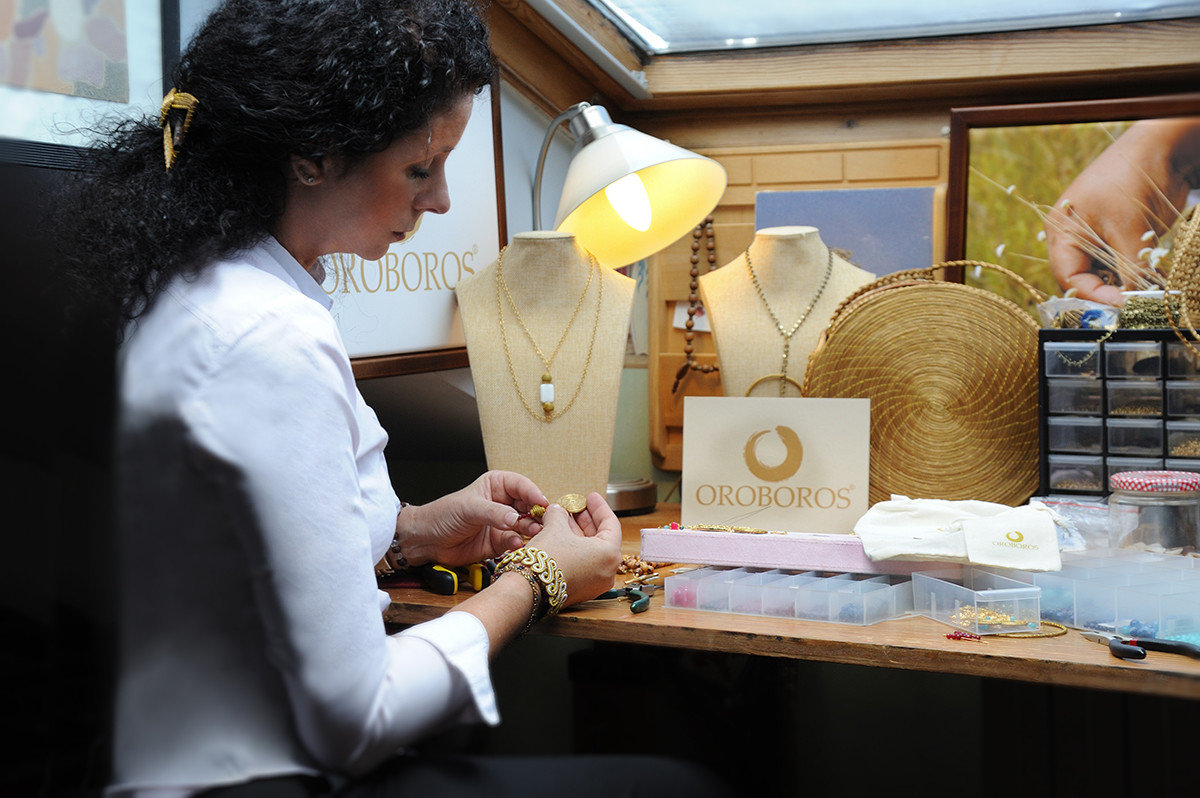
Its main characteristic is the bright and golden color, hence the Portuguese name of capim dourado, which literally means golden grass; because of this property it is used to manufacture jewelry, as well as other artifacts such as fabrics and furnishings.
The species begins flowering in July and the seeds ripen from early September to October. The Government of the State of Tocantins, through its Environment Agency (Naturatins), has established a regional law that allows the harvest only from 20 September to 20 November, and that requires the cutting and dispersion in the grazing areas just after collection. This law aims to be an effective way to contribute to the sustainability of craft activities involving the manufacture of this plant.
In the past, many slaves escaped from their masters in search for new opportunities. The indios populating those areas welcomed them and taught them the art of manufacturing goods through plants. Today vases, hats, bags, and finally jewels are an important economic factor for the local Jalapao population. By law the capim dourado can be sold only as an handcrafted product and not in its natural state. This gives work to more than 100 families and provides them with income for their livelihood.
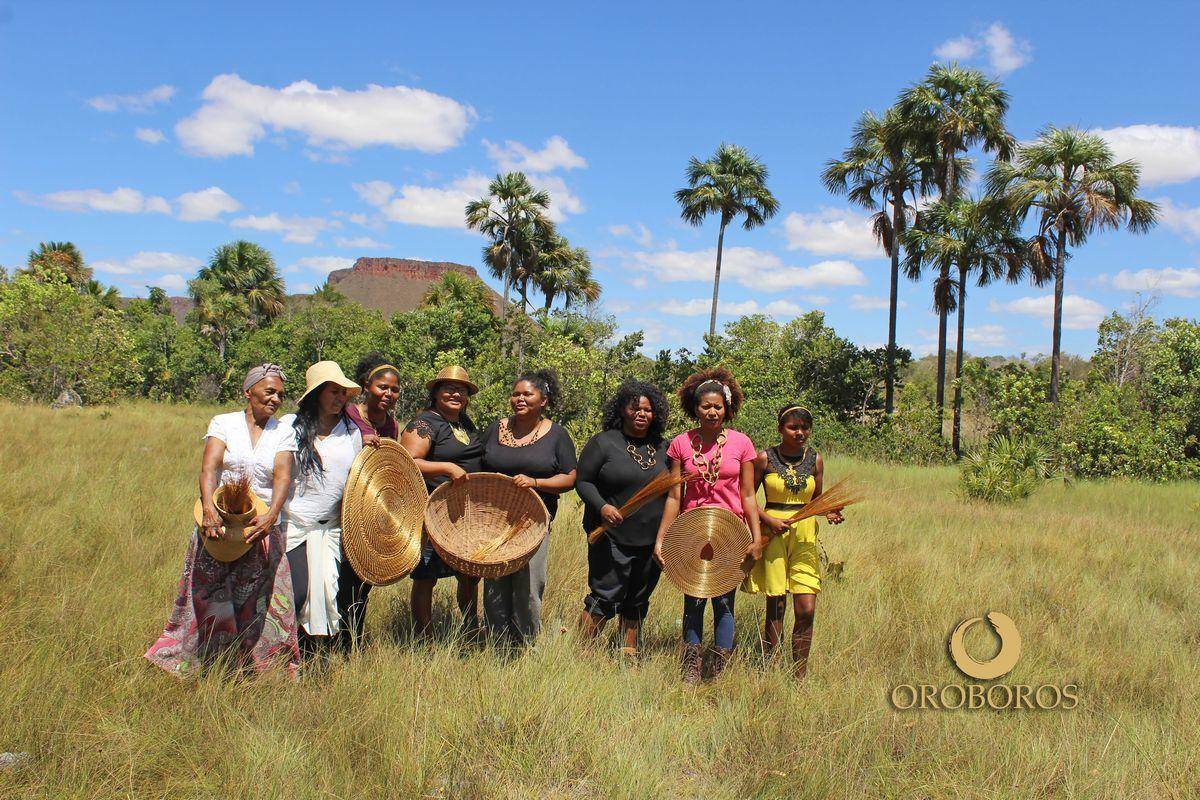
The manufacturing of this product has very ancient origins, inherited from generation to generation. It starts with a two-day rest to allow drying, followed by immersion of the fiber in water to increase its flexibility. At this point the sewing starts, traditionally made via cactus spines. Recently the use of a golden silk thread has become popular, as its brightness perfectly combines with that of the golden grass.
This region has seen an improvement in its economic condition thanks to the production and trade of this plant, which is meticulously regulated to avoid exploitation of workers or environmental abuse.
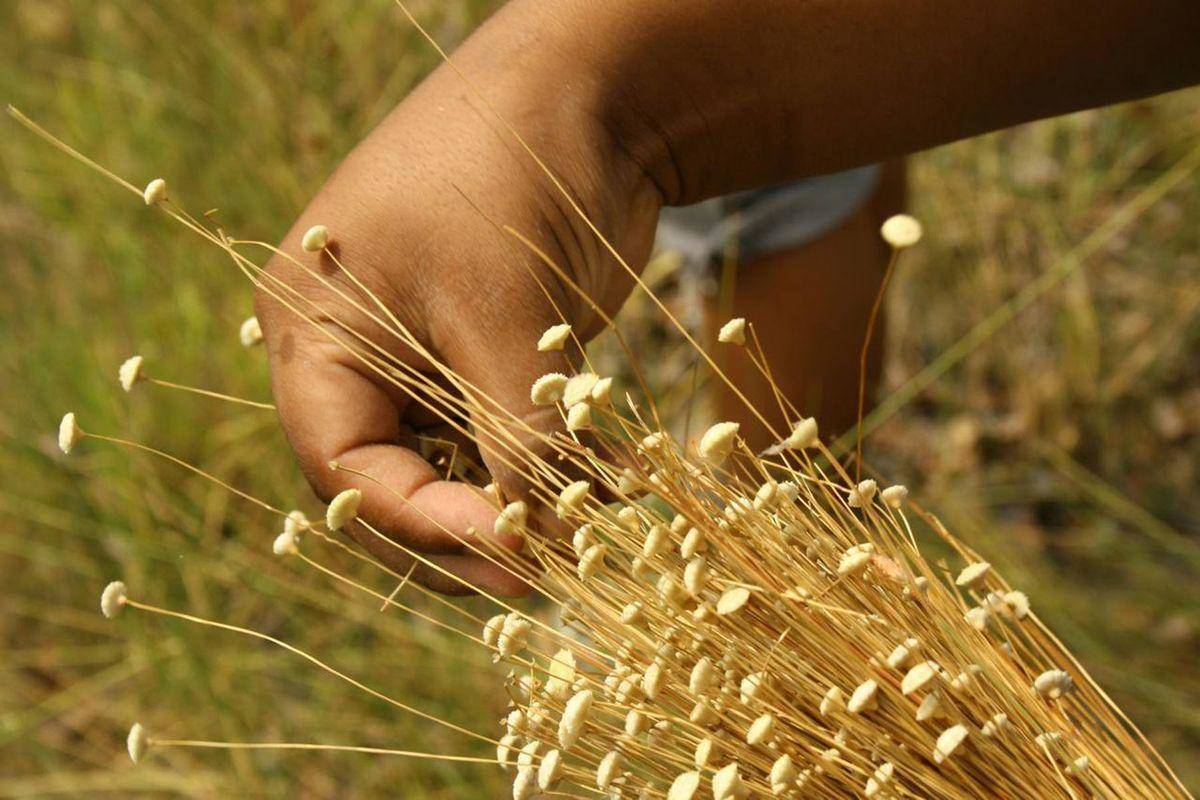
Golden grass jewels can be a sustainable alternative to gold: much more affordable, hypoallergenic, extremely light to wear and unalterable. Most importantly, the eco-sustainability of the golden grass is far superior to that of gold, which through its extraction has a high polluting impact on the areas where the extraction is performed. By purchasing an Oroboros product you will not only contribute in supporting indigenous populations, but above all you will help us improve the conditions of our planet.


